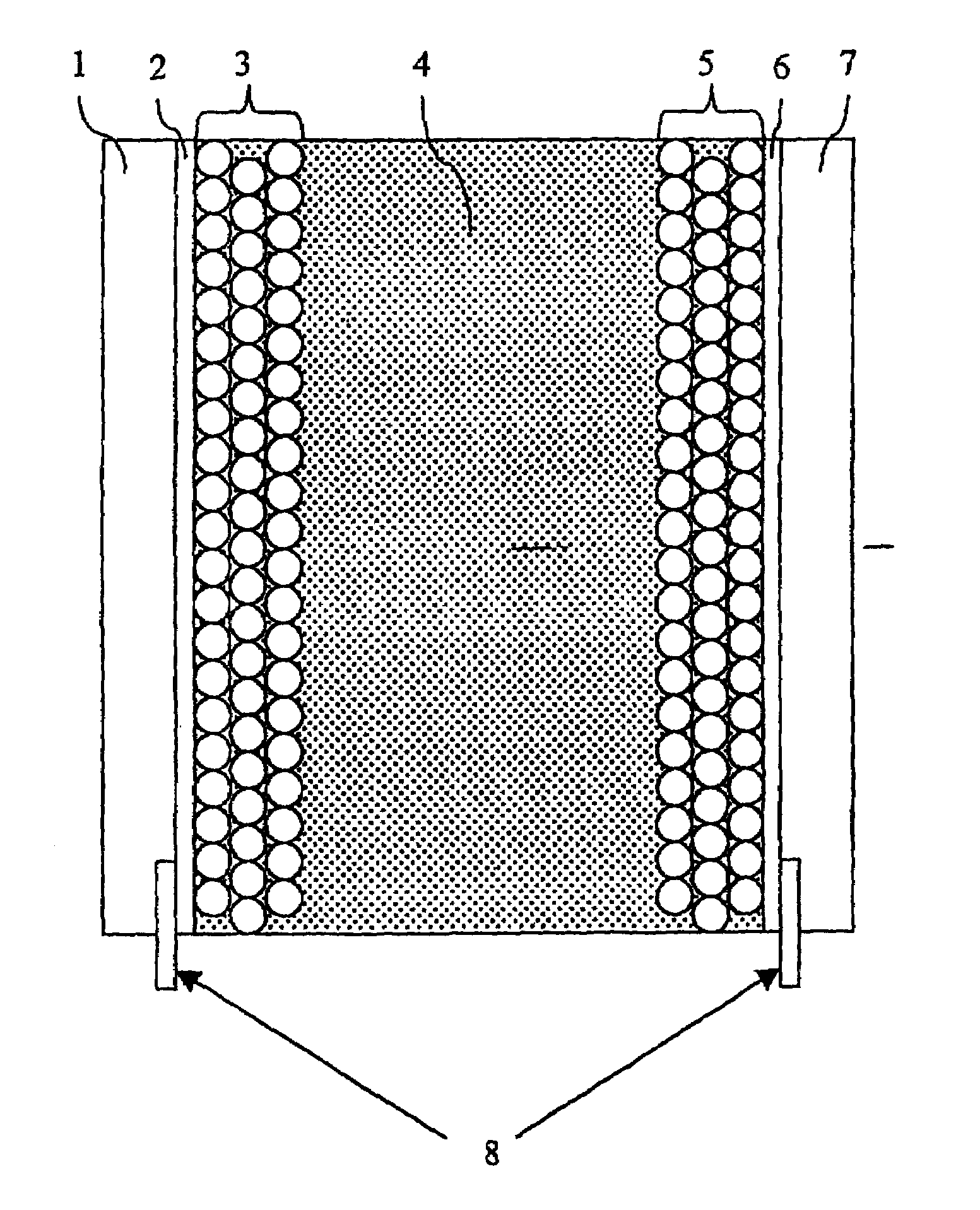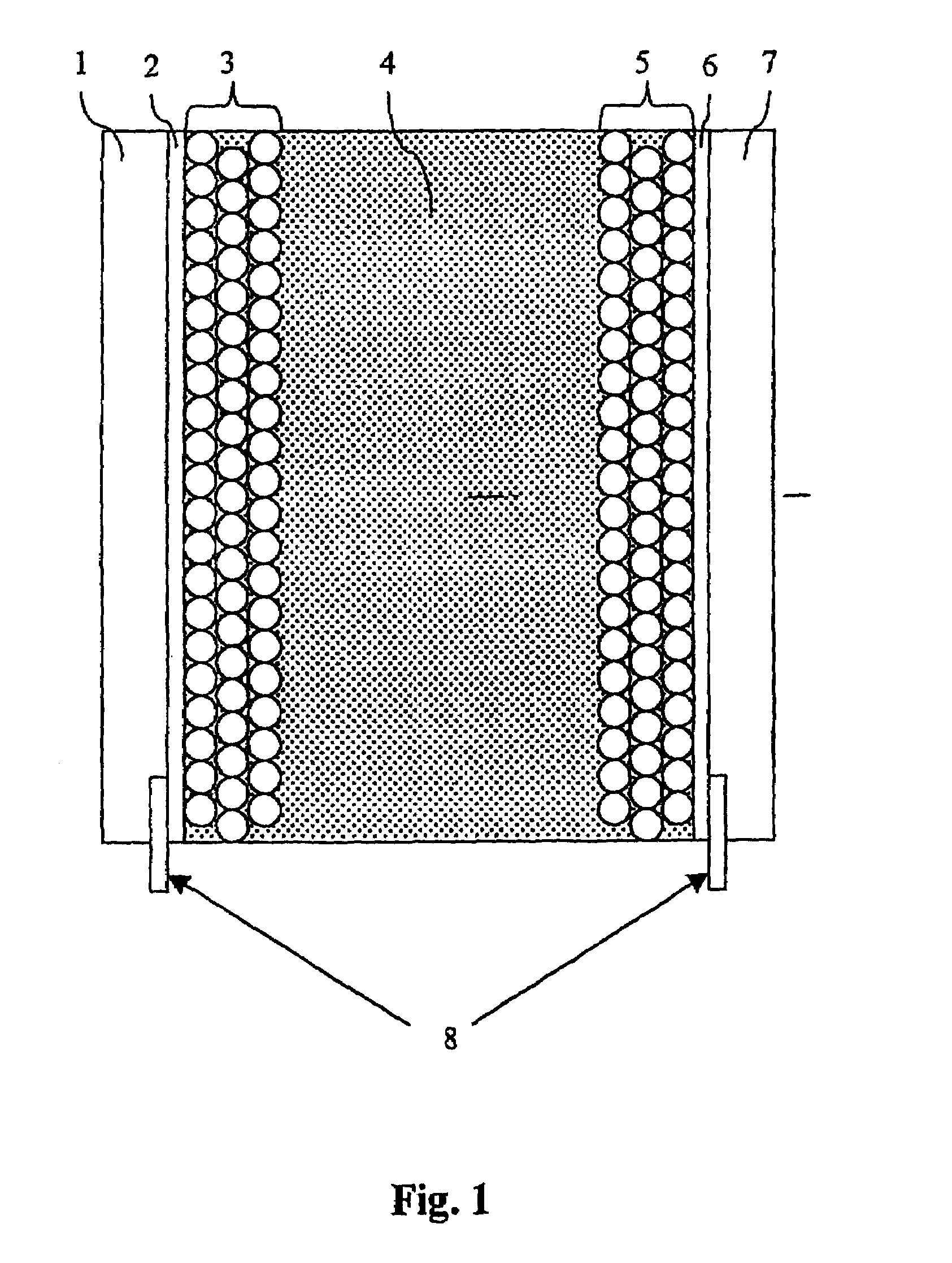Electrochromic device based on nanocrystalline materials
a nano-crystalline material and electrochromophore technology, applied in semiconductor devices, instruments, electrical apparatus, etc., can solve the problems of inability to classify the electrochromophore as n, inability to charge the coloration, spontaneous bleaching, etc., to achieve rapid colour change, improve stability, and good memory
- Summary
- Abstract
- Description
- Claims
- Application Information
AI Technical Summary
Benefits of technology
Problems solved by technology
Method used
Image
Examples
specific example
[0047]An electrochromic display according to the invention may be provided as described in detail below.
[0048]Bis-(2-phosphonoethyl)-4,4′-bipyridinium dichloride is adsorbed to the surface of a 4 m thick nanostructured film of TiO2 on a conducting glass plate (0.5 μm fluorine-doped SnO2 on 2 mm glass). This electrode is transparent, but colours blue upon reduction. A nanostructured carbon film (10-50 μm thick), comprising carbon black and graphite particles, is deposited on a second conducting plate. On top of this film a porous white light-scattering film is deposited as a reflector. The two plates are assembled face-to-face using a hot-melting plastic at the uncovered edges of the two plates. Electrolyte (0.2 M tetrabutylammonium trifluoromethanesulfonate in 3-methoxypropionitrile) is introduced in the space between the two electrodes. The resulting electrochromic display has a good memory effect and stability (>100,000 cycles without severe degradation).
[0049]Above a number of em...
PUM
| Property | Measurement | Unit |
|---|---|---|
| particle size | aaaaa | aaaaa |
| porosity | aaaaa | aaaaa |
| thickness | aaaaa | aaaaa |
Abstract
Description
Claims
Application Information
 Login to View More
Login to View More - R&D
- Intellectual Property
- Life Sciences
- Materials
- Tech Scout
- Unparalleled Data Quality
- Higher Quality Content
- 60% Fewer Hallucinations
Browse by: Latest US Patents, China's latest patents, Technical Efficacy Thesaurus, Application Domain, Technology Topic, Popular Technical Reports.
© 2025 PatSnap. All rights reserved.Legal|Privacy policy|Modern Slavery Act Transparency Statement|Sitemap|About US| Contact US: help@patsnap.com


